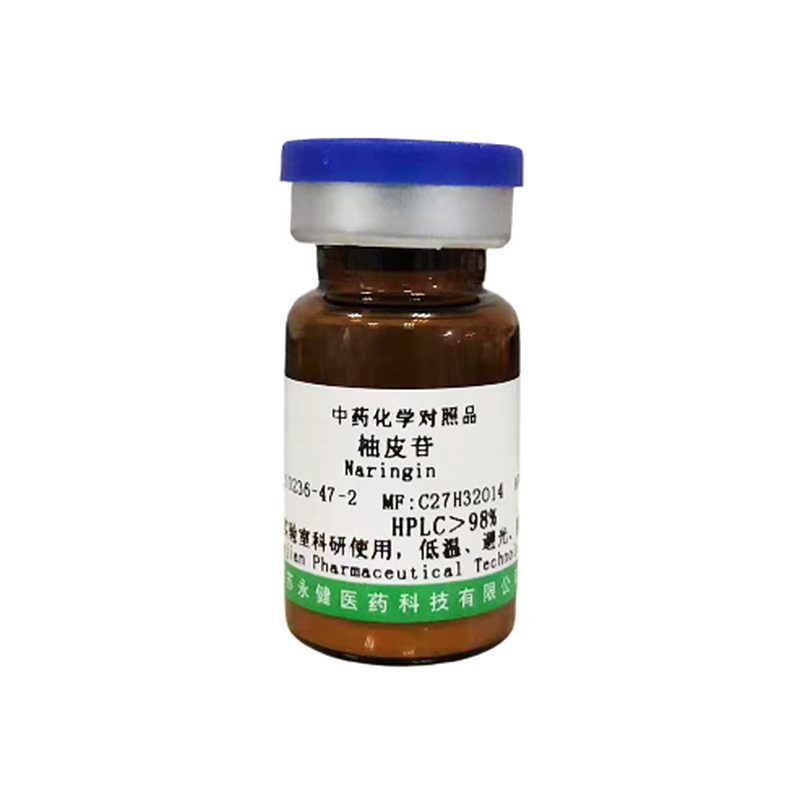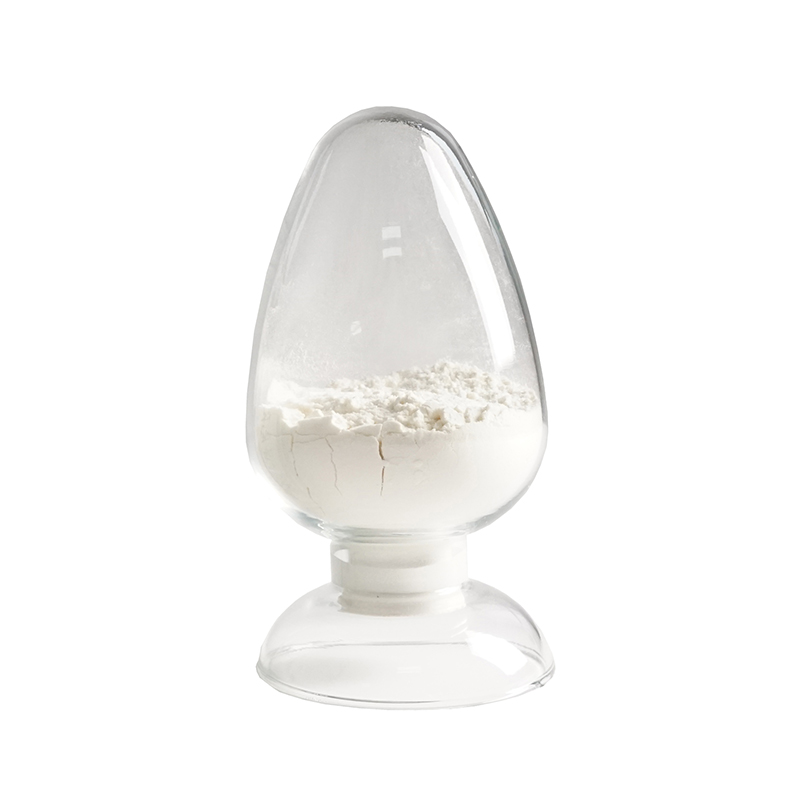Hot New Products Cas No.480-20-6 - Naringenin-7-O-neohesperidoside; Naringin; Isonaringenin CAS No. 10236-47-2 – Yongjian
Hot New Products Cas No.480-20-6 - Naringenin-7-O-neohesperidoside; Naringin; Isonaringenin CAS No. 10236-47-2 – Yongjian Detail:
Brief Introduction
English name: naringin
Usage: it can be used as food additive, mainly for gum sugar, cool drinks, etc.
Physicochemical properties: naringin is a complex of glucose, rhamnose and naringin. It is a white to light yellow crystalline powder. Generally, it contains 6 ~ 8 crystal water with a melting point of 83 ℃. Drying to constant weight at 110 ℃ to obtain crystals containing 2 crystal water, with a melting point of 171 ℃. Naringin has a very bitter taste, and the aqueous solution with a concentration of 20mg / kg still has a bitter taste. Slightly soluble in water, easily soluble in hot water, ethanol, acetone and warm glacial acetic acid. There are phenolic hydroxyl groups in the structure, and its aqueous solution is weakly acidic. The product “citrus glucoside dihydrochalcone” after hydrolysis and hydrogenation is a sweetener, and the sweetness is more than 150 times that of sucrose.
Numbering System
CAS No.: 10236-47-2
MDL No.: mfcd00149445
EINECS No.: 233-566-4
RTECS No.: qn6340000
BRN No.: 102012
Physical Property Data
1. Characters: naringin is a complex of glucose, rhamnose and grapefruit gametophyte. It is a white to light yellow crystalline powder.
2. Melting point (º C): 171
3. Refractive index: – 84
4. Specific rotation (º): – 91
5. Solubility: slightly soluble in water, easily soluble in hot water, ethanol, acetone and warm glacial acetic acid.
Toxicology Data
1. Test method: abdominal cavity
Intake dose: 2 mg / kg
Test object: rodent mouse
Type of toxicity: acute
Toxic effects: detailed toxic and side effects were not reported except for other lethal dose values
2. Test method: abdominal cavity
Intake dose: 2 mg / kg
Test object: rodent guinea pig
Type of toxicity: acute
Toxic effects: detailed toxic and side effects were not reported except for other lethal dose values
Ecological Data
This substance may be harmful to the environment, so special attention should be paid to the water body.
Molecular Structure Data
1. Molar refractive index: 135.63
2. Molar volume (cm3 / mol): 347.8
3. Isotonic specific volume (90.2k): 1103.4
4. Surface tension (dyne / cm): 101.2
5.Polarizability (10-24cm3): 53.76 [2]
Calculate Chemical Data
1. Reference value for hydrophobic parameter calculation (xlogp): – 0.5
2. Number of hydrogen bond donors: 8
3. Number of hydrogen bond receptors: 14
4. Number of rotatable chemical bonds: 6
5. Topological molecular polar surface area (TPSA): 225
6. Number of heavy atoms: 41
7. Surface charge: 0
8. Complexity: 884
9. Number of isotopic atoms: 0
10. Determine the number of atomic stereocenters: 11
11. Number of uncertain atomic stereocenters: 0
12. Determine the number of chemical bond stereocenters: 0
13. Number of indeterminate chemical bond stereocenters: 0
14. Number of covalent bond units: 1
Properties And Stability
If used and stored according to specifications, it will not decompose.
Storage Method
Food grade plastic bag is covered with kraft paper bag for sealed packaging. Store in a cool and dry place.
Purpose
Grapefruit fruit is rich in naringin, which is about 1%. It mainly exists in peel, capsule and seed. It is the main bitter substance in grapefruit fruit. Naringin has high economic value and can be used to make new dihydrochalcone sweeteners, as well as drugs for the prevention and treatment of cardiovascular disease, allergy and inflammation.
1. It can be used as an edible additive, mainly for gum sugar, cool drinks, etc.
2. It can be used as raw material for the synthesis of new sweeteners dihydronaringin chalcone and neohesperidin dihydrochalcone with high sweetness, non toxicity and low energy.
Extraction Method
Naringin is easily soluble in alcohol and alkali solution, and can also be dissolved in hot water. According to this characteristic, naringin is usually extracted by alkali method and hot water method. The production process is as follows: Pomelo Peel → crushing → leaching with lime water or hot water → filtration → cooling and precipitation → separation → drying and crushing → finished product.
Hot Water Method
The hot water extraction process is as follows: after the pomelo peel is crushed, add 3 ~ 4 times of water, heat and boil for 30min, and press to obtain the filtrate. This step can be repeated 2 ~ 3 times. After the filtrate is concentrated for 3 ~ 5 times, it is still (0 ~ 3 ℃) to precipitate and crystallize, filtered and separated, and the precipitate is the crude product. It can be refined with alcohol or hot water. This method has low recovery and long precipitation time. Recently, the Citrus Research Institute of Chinese Academy of Agricultural Sciences has improved the method, that is, the extract is treated with yeast or pectinase, which shortens the precipitation time and improves the yield and purity by about 20% ~ 30%. The remaining peel residue can be used to extract pectin.
Alkali Process
The alkali method is to soak the leather residue in lime water (pH12) for 6 ~ 8h and press it to obtain the filtrate. Place the filtrate in a sandwich pot, neutralize it with 1:1 hydrochloric acid to pH 4.1 ~ 4.4, heat it to 60 ~ 70 ℃, and keep it warm for 40 ~ 50min. Then cool at low temperature to precipitate naringin, collect the precipitate, dry the water with centrifuge, place it in the drying room, dry it at 70 ~ 80 ℃, crush and grind it into fine powder, which is the crude product. Repeat crystallization with hot alcohol for 2 ~ 3 times to obtain pure product.
Improved Process
With the above method, the sugar, pectin, protein, pigment and other components in the pomelo peel enter the extraction solution at the same time, resulting in low product purity and multi-step recrystallization for purification. Therefore, the extraction time is long, the process is complex, and the solvent, energy and cost are increased. In order to simplify the process, improve the purity of products and reduce the cost, many studies have been made on the recovery process of naringin. Li Yan et al. (1997) used ultrafiltration to clarify naringin extract. The purity of the product obtained by crystallization can be increased from 75% of the traditional alkali method to 95%. The operating conditions of ultrafiltration are as follows: pressure 0.15 ~ 0.25MPa, circulating flux 180L / h, pH 9 ~ 10 and temperature about 50 ℃. Japan Itoo (1988) successfully purified naringin with macroporous adsorption resin diaion HP-20. Wu houjiu et al. (1997) also reported that several domestic macroporous adsorption resins have good adsorption and analytical properties for naringin, which can be used for the separation and purification of naringin. In summary, the author puts forward the following improved process. The flow chart is as follows: Pomelo Peel → crushing → hot water extraction → filtration → ultrafiltration → ultrafiltration permeate → resin adsorption → analytical solution → concentration → cooling precipitation → separation → thousand drying → finished product.
Product detail pictures:


Related Product Guide:
Well-run equipment, specialist income crew, and better after-sales services; We're also a unified major family, anyone stay with the organization value "unification, determination, tolerance" for Hot New Products Cas No.480-20-6 - Naringenin-7-O-neohesperidoside; Naringin; Isonaringenin CAS No. 10236-47-2 – Yongjian , The product will supply to all over the world, such as: Mexico, Poland, Kenya, We firmly think that we have the full capability to present you contented merchandise. Wish to collect concerns within you and build a new long-term synergy romantic relationship. We all significantly promise:Csame excellent, better selling price; exact selling price, better quality.
This supplier stick to the principle of "Quality first, Honesty as base", it is absolutely to be trust.





